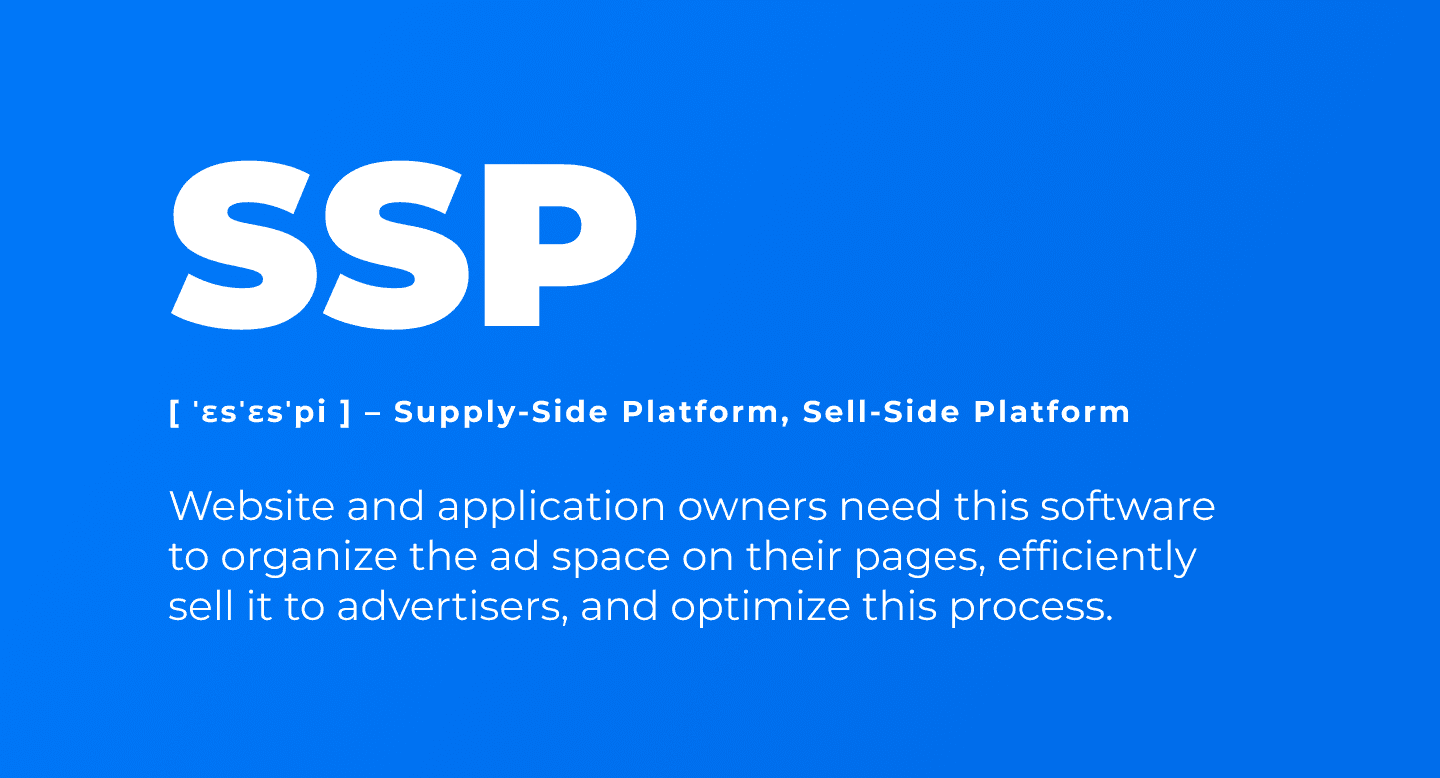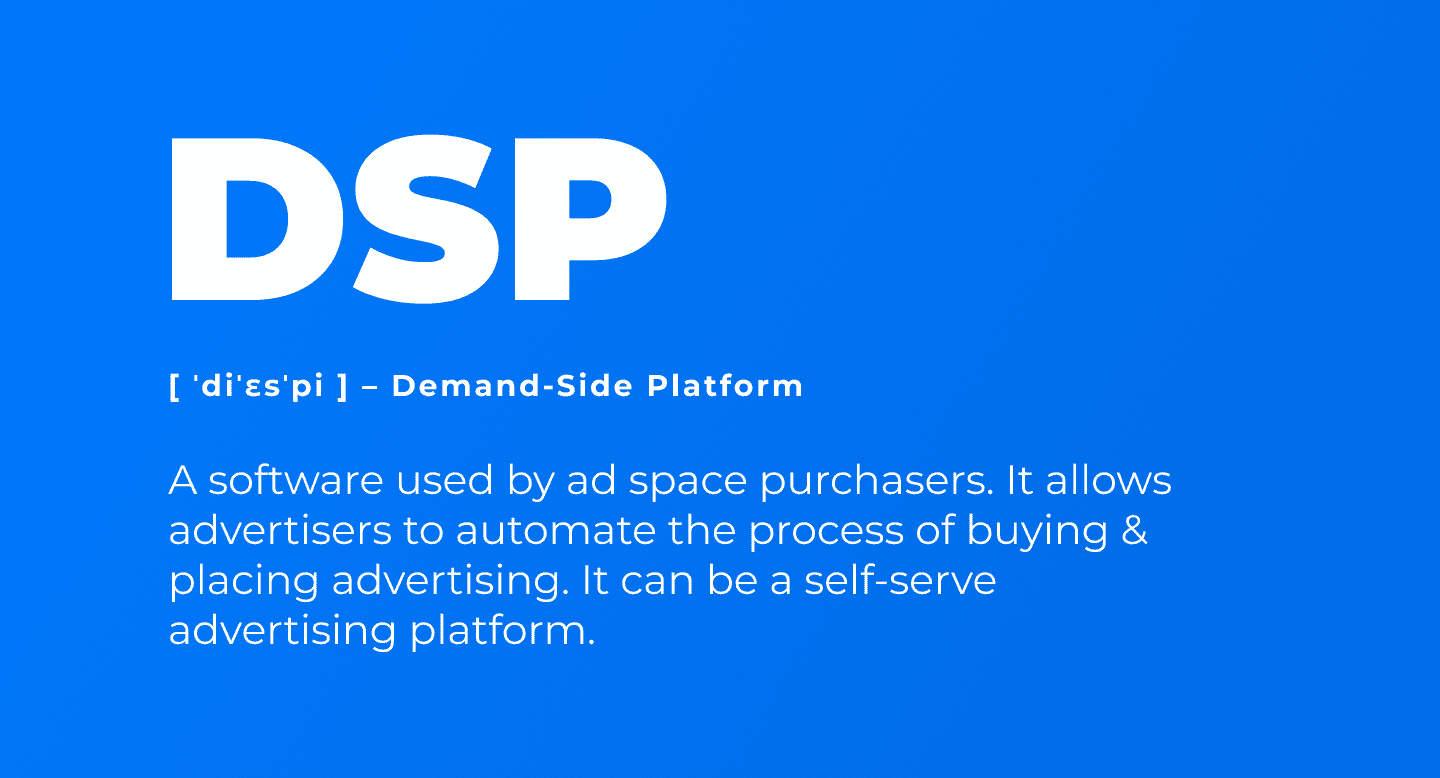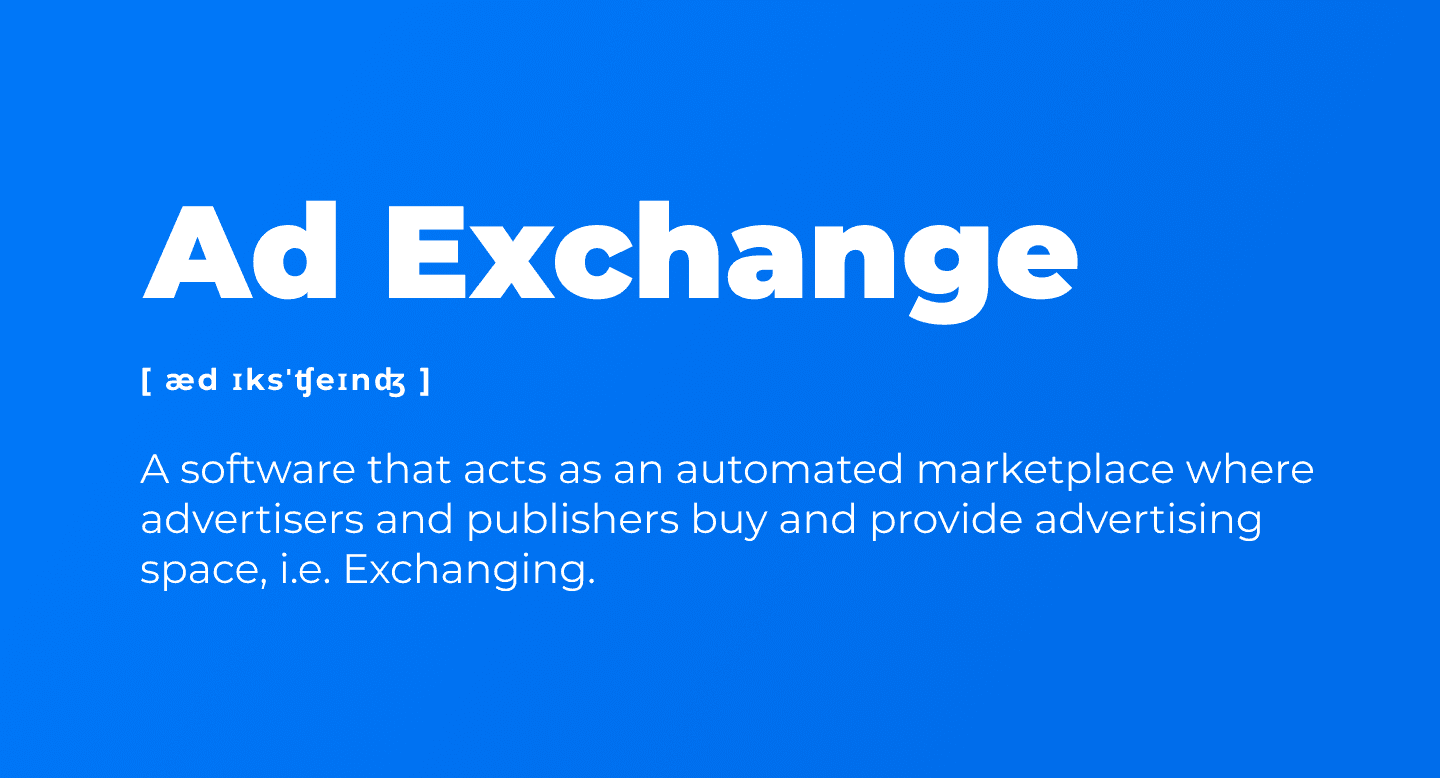As Statista shows in their research, American advertisers spent $70 billion on programmatic ads in 2020. In 2021, this number increased to $167 billion and continued to grow.
Programmatic advertising gives companies the ability to start real-time bidding on ad spaces on a wide variety of sites or apps. For example, a brand can advertise on hundreds of websites within milliseconds using demand-side platforms [DSPs] — all thanks to sophisticated programmatic advertising software and algorithms. These algorithms also collect user data and save it to data-management platforms [DMP] to show ads that cater to users’ needs. On the other side, publishers can connect to the same advertising ecosystem via the sell-side platforms [SSPs] and start making money!
But what is hidden behind all this terminology? Let’s dive in and learn the fundamental elements of programmatic advertising!
Supply-Side Platform [SSP]
Supply-Side Platform, also known as Sell-Side Platform is software for publishers, allowing them to sell impressions. Website owners and app developers monetize their ad space and inventory using this platform. With an SSP, they can manage their supply, analyze results, and receive payments.

Supply-Side Platform usually focuses on ad placements and inventory management, but they may include some functions for ad serving. Among the interfaces for impression selling, the range of basic SSP abilities involves the following processes:
- Analytics and reports about ad inventory performance (e.g., impressions, fill rates).
- Monetization optimization algorithms
- White listing and Black listing to block undesirable ads
- Selection of the method or technology of connection to the platform from the demand side
- Inventory management.
Beyond these, you may find some specific features on certain platforms. For example, BidsCube SSP has a built-in VAST-Adapter, system monitoring tools, AI optimization, and real-time analytics.
SSPs allow publishers to control the process of inventory sales. It guarantees them that ad space will be filled with content and will bring profit.
Demand-Side Platform [DSP]
A demand-side platform is software for advertisers [usually brands or agencies]. Within DSP they can automatically buy digital ads on the most fitting sites, apps, media, or even TV Shows and billboards. Moreover, DSP allows for regulating how ads will be shown to customers and tracking the effectiveness of campaigns.

As a business owner or an advertising specialist, you can use DSPs to improve the cost efficiency of your marketing strategies. A demand-side platform helps to minimize the effort and time put into ad placement — all thanks to having the platform that buys ad placements for your advertisement automated using modern RTB capabilities.
For example, you regularly place ads on Facebook, Google Ads, Instagram, etc. A DSP allows you to do the same. The difference is that using an independent DSP can advertise on any platform or social media without restrictions. Not only Facebook, Google, and Instagram.
An RTB [real-time bidding] algorithm allows a DSP to auction ad spaces in milliseconds. This is how to start operating with a DSP.
- Choose a platform type according to your requirements and budgets. It may be an existing eco-system (mobile), a blank-sheet condition (Whilte-label), or a Self-serve solution, completely controlled by you.
- Define your budgets. Find out the cost per click and action that suit your efficiency requirements.
- Set the maximum CPC and CPM that you are willing to work with. A DSP algorithm will set the starting bid for your campaign based on these metrics.
- A platform will place your ads according to the given settings. Your banners and videos will appear on corresponding websites with reasonable pricing.
- A DSP will optimize your campaign in the process by changing the bid to improve the results.
There are dozens of DSPs with different specifications available, and you should choose ones that perform well for your unique needs. BidsCube DSP is an industry-proven solution for advertisers to reach the right audience and achieve growth goals.
Ad Exchange
An ad exchange is a way to make advertisement deals on sources provided by website owners. As its name says, an ad exchange is a software on a remote server that automatically processes advertising purchase-and-sale transactions in real-time (RTB). This Platform is neutral and works autonomously. This is the core software that allows the RTB technology to existing.

The Ad Exchange regulates pricing during a real-time bidding process. It receives a bid from an advertiser and knows the right inventory to place the advertisement. If conditions fit each other, the deal proceeds. A publisher connects with an exchange through a supply-side platform. He adds inventory, sets needed options for ad trading, and controls the supply-selling process. On the other hand, an advertiser comes to an ad exchange through a demand-side platform and sets cost-per-impression they agree to pay and the upload ad creatives required to launch a campaign.
When the real-time bidding process happens, an advertiser with the highest bid receives fitting ad space with the best conditions. The main difference from a traditional ad dealing process is in its speed. While negotiations between people take days, an ad exchange starts a new auction every few milliseconds.
As a result of these operations, all participants of the process receive the most suitable ad space and get the revenue they genuinely want.
And in the final, the user can see an advertisement! Noteworthy is that the entire process can complete in less than 300ms. It is faster than the human blink!
Data Management Platform [DMP]
The last but not the least important part of the programmatic advertising selling process is a Data Management Platform. As its name says, it collects data from cookies, mobile and online sources and analyzes it. It is a backbone that finally makes programmatic effective. It adds value to the raw data and improves the efficiency of campaigns.

A DMP deals with such data as location, household income, customer & purchasing information, and many other factors. The data source can be anything: from apps and websites to first-party and third-party data. A DMP builds anonymous detailed customer profiles who will see ads. A data management platform provides the collected data to SSPs, DSPs, and ad exchanges. Further, these tools apply the received data to achieve a more efficient ad inventory distribution.
To sum up
Programmatic advertising might seem complicated at first glance, but the whole system works with the help of the same algorithm applied in different forms. Today, we have taken a look at its main components and presented you with actionable strategies for each. Now you can dive deeper into programmatic and understand how to improve your campaigns with these instruments.

